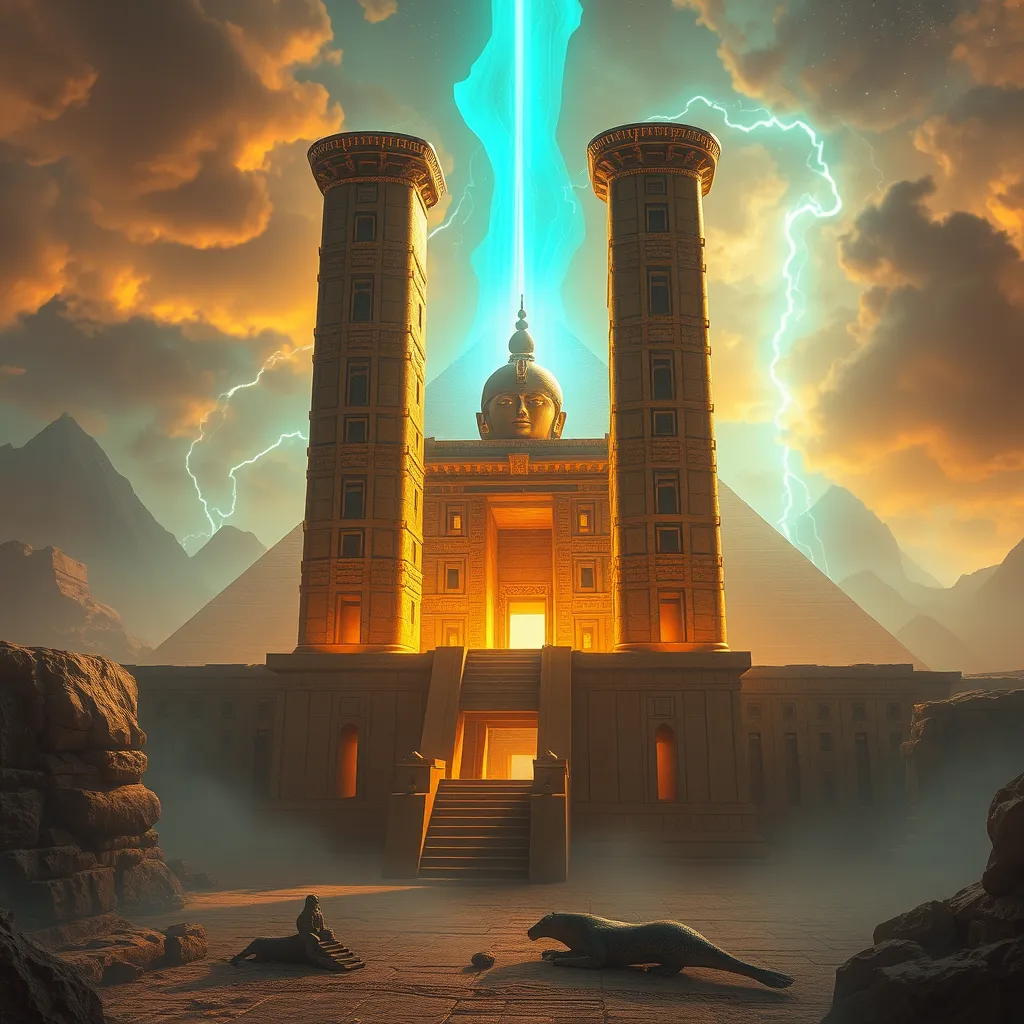The Duat: A Realm of Hidden Wonders
I. Introduction to the Duat
The Duat, a term deeply rooted in ancient Egyptian mythology, refers to the realm of the dead. It is a mystical and complex place that embodies the beliefs and values of the ancient Egyptians regarding life after death. The Duat was not merely a destination but a significant aspect of their cosmology, representing both the challenges and the wonders that awaited the deceased in the afterlife.
This article aims to explore the hidden wonders of the Duat, shedding light on its significance, structure, inhabitants, and the beliefs surrounding it. Through this exploration, we will gain a deeper understanding of how the Duat shaped ancient Egyptian culture and continues to intrigue modern audiences.
II. The Structure of the Duat
The Duat is often depicted as a vast and intricate landscape containing various regions, each with its unique characteristics. Ancient texts describe it as a labyrinthine world filled with rivers, mountains, and otherworldly features.
- Regions and Landscapes: The Duat includes various areas, such as the Field of Reeds, a paradise for the worthy, and the Hall of Ma’at, where souls are judged.
- Key Features: Rivers, such as the River of Night, and mountains, like the Mountain of Fire, are prominent in the Duat’s geography.
- Symbolism: The Duat symbolizes the journey of the soul, the cycle of life and death, and the importance of ethical living.
III. The Journey Through the Duat
Upon death, the deceased would embark on a perilous journey through the Duat. This journey was fraught with challenges that tested the soul’s worthiness.
- The Weighing of Souls: Central to this journey was the weighing of the deceased’s heart against the feather of Ma’at, the goddess of truth and justice. A heart lighter than the feather signified a virtuous life.
- Spells and Rituals: To navigate the Duat safely, the deceased relied on spells from the Book of the Dead, which provided guidance and protection against malevolent forces.
- Guides and Protectors: Deities and mythical beings assisted the soul in overcoming obstacles and dangers encountered along the way.
IV. Deities of the Duat
The Duat is inhabited by numerous gods and goddesses, each with specific roles and responsibilities in the afterlife.
- Osiris: The god of the afterlife, Osiris presides over the judgment of souls and is a symbol of resurrection and renewal.
- Isis: As the goddess of magic and healing, Isis helps guide the deceased and offers protection.
- Anubis: The jackal-headed god oversees mummification and the protection of graves, ensuring safe passage through the Duat.
Iconography depicting these deities can be found in ancient texts and tombs, often illustrating their roles in the afterlife process.
V. Hidden Wonders: Mystical Creatures and Guardians
Within the Duat, various mythical creatures and guardians play crucial roles in the journey of the deceased.
- Mythical Creatures: The Duat is home to beasts such as the serpent Apep, who represents chaos and must be defeated to ensure safe passage.
- Guardians: Deities like the four sons of Horus serve as protectors of the deceased, each overseeing different aspects of the afterlife.
- Interactions: The deceased often interacted with these beings, seeking their aid or facing their challenges in the quest for eternal life.
VI. The Duat in Ancient Texts and Art
The Duat is richly documented in ancient Egyptian texts, especially the Book of the Dead, which serves as a guide for the deceased.
- Key Texts: The Book of the Dead contains spells and illustrations that describe the journey through the Duat and the rituals needed for a successful passage.
- Artistic Representations: Tomb paintings and carvings often depict scenes from the Duat, showcasing the judgment, the Field of Reeds, and encounters with deities.
- Archaeological Insights: Excavations of tombs and temples have revealed valuable information about beliefs and practices surrounding the Duat.
VII. The Duat’s Influence on Modern Culture
The concept of the Duat continues to resonate in contemporary culture, influencing literature, media, and spiritual discussions.
- Literature and Media: The Duat has inspired various works of fiction, often portraying its mysteries and adventures in the afterlife.
- Spiritual Discussions: The Duat is explored in metaphysical contexts, drawing parallels with other afterlife beliefs and spiritual journeys.
- Comparative Analysis: The beliefs surrounding the Duat can be compared to those of other cultures, such as the Greek underworld or the Christian concept of heaven and hell.
VIII. Conclusion
The Duat stands as a testament to the rich spiritual and cultural heritage of ancient Egypt, embodying the complexities of life, death, and the afterlife. Its hidden wonders—ranging from mystical creatures to the revered deities—offer profound insights into the beliefs and values of a civilization that continues to captivate the imagination today.
In reflecting on the Duat’s significance, we recognize its enduring legacy in our understanding of life and death, urging us to explore further the intricate tapestry of ancient Egyptian mythology and its implications for our own beliefs.




